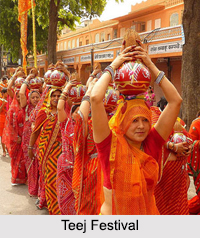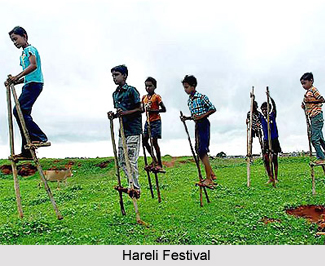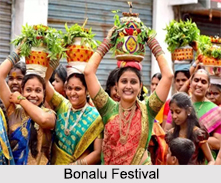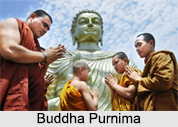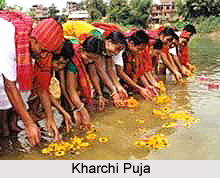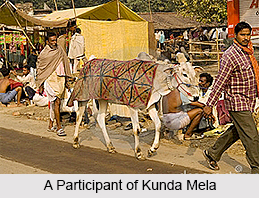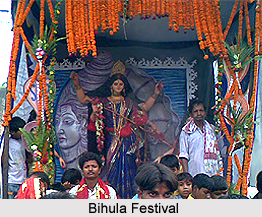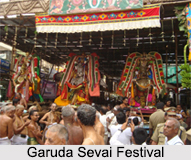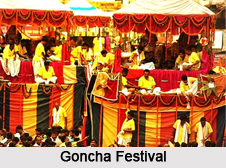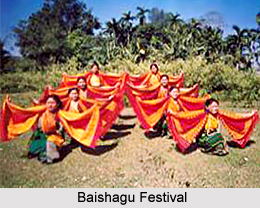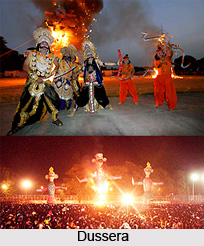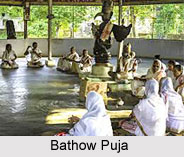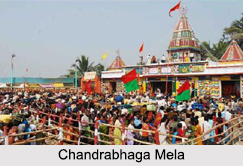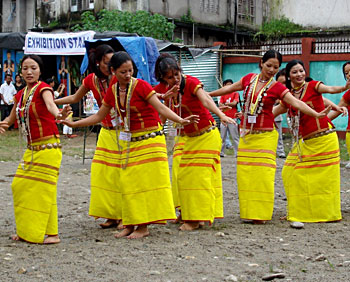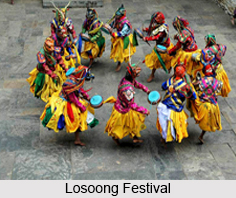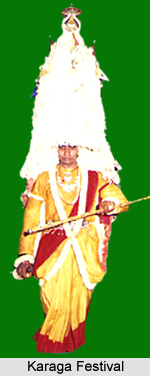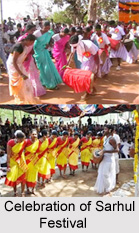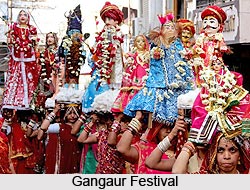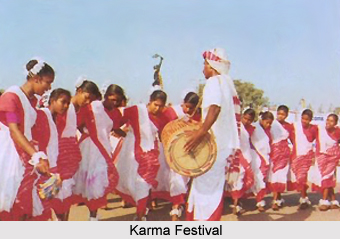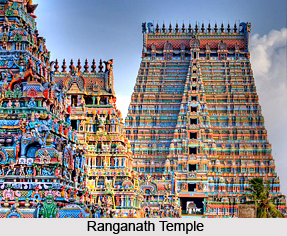 Ranganath temple festival is an important and famous festival organized in the Karnataka state of India. The festival is held in the honour of Lord Vishnu. Ranganath temple is situated on an island in the Kaveri (also spelled Cauvery in English) River, near Tiruchirapalli (Trichinopoly). Enclosed in walls within walls, the temple is perhaps the largest in India, the outermost (seventh) wall enclosing practically the whole township.
Ranganath temple festival is an important and famous festival organized in the Karnataka state of India. The festival is held in the honour of Lord Vishnu. Ranganath temple is situated on an island in the Kaveri (also spelled Cauvery in English) River, near Tiruchirapalli (Trichinopoly). Enclosed in walls within walls, the temple is perhaps the largest in India, the outermost (seventh) wall enclosing practically the whole township.
This temple festival is the main festival of Vaikuntha Ekadashi that falls in the Tamil month of Margazhi, corresponding to December-January. The festival continues for a period of 20 days. It is celebrated in Tamil Nadu and Andhra Pradesh with great pomp and show. Lakhs of devotees and pilgrims from various parts of India congregate to participate in this festival and is also called the Mohini festival because of the legend that follows.
Vaikuntha Ekadashi i.e. the eleventh day of the waxing moon in the month of Pausha, is celebrated in all Vaishnavite temples. It is believed that on certain days of a fortnight, spiritual influences flow towards the earth and favour contemplation. The eleventh day of each fortnight is such a day. Vaikuntha Ekadashi is said to be among the most important and auspicious of these days. Observing Vaikuntha Ekadashi with strict discipline and austerity is regarded as equal to observing three crores of ordinary ekadashis. This is why Vaikuntha Ekadashi is called the Mokkodi Ekadashi (three crore-ekadashi).
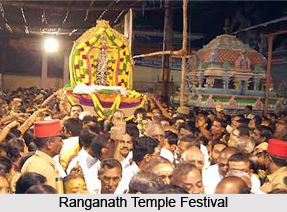 As per the legends, King Rukmangada was being tempted by a beautiful maiden called Mohini to eat that day though he was fasting for Vaikuntha Ekadashi. Tempted, but knowing in his heart that it was wrong to eat, the king prayed to Vishnu to deliver him from temptation. Actually, the tempter was Vishnu disguised as Mohini, who was testing the king`s devotion. Vishnu answered the king`s prayer and whisked him off to his own abode at Vaikuntha. Hindus of south India have since observed this festival as a day of fasting and hymn singing in praise of Vishnu.
As per the legends, King Rukmangada was being tempted by a beautiful maiden called Mohini to eat that day though he was fasting for Vaikuntha Ekadashi. Tempted, but knowing in his heart that it was wrong to eat, the king prayed to Vishnu to deliver him from temptation. Actually, the tempter was Vishnu disguised as Mohini, who was testing the king`s devotion. Vishnu answered the king`s prayer and whisked him off to his own abode at Vaikuntha. Hindus of south India have since observed this festival as a day of fasting and hymn singing in praise of Vishnu.
Several legends have grown up round the festival and one relates to the ban on eating rice on Ekadashi day. It is said that once the sweat flowed from Brahma`s forehead and assumed the form of a demon. He was directed by Brahma to set up his abode in the particles of rice consumed by man on ekadashi day, which are converted into worms that destroy human health and happiness. Hence, the devotees observe a complete fast and vigil and spend the whole day in Harikirtan (panegyrics to Vishnu) and meditation. Some devotees observe it as Nirjal Ekadashi i.e. fast, not drinking even a drop of jal (water). The scriptures say that in this age of Kali, the observance of even one Vaikuntha Ekadashi with total faith, devotion and concentration on Vishnu will release one from the cycle of births and deaths.
The tenth day that marks the culmination of the Vaikuntha Ekadashi festival is an occasion for numerous religious rituals. After a dip in the holy Chandra Pushkarani (tank), the Lord comes in procession through the Paramapatha Vasal to receive the Maha Nivedyam or offering of 12,000 different items. Eighty verses from Thiruvaimozhi are sung by the Arayars. The Saint Nammalwar arrives to make his obeisance to the Lord who reciprocates by making a gift of his garland and sandals to the saint. After these rituals, the Lord returns to the sanctum sanctorum. The festival concludes on the eleventh day from Ekadashi with the special worship, offerings and recitation of a thousand verses of Thiruvainozhi, written in the ninth century.
